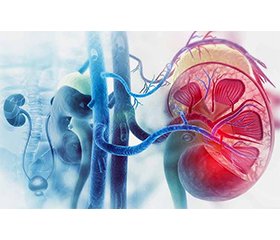Международный эндокринологический журнал Том 21, №3, 2025
Вернуться к номеру
Гіпонатріємія внаслідок надниркової недостатності та синдрому неадекватної секреції антидіуретичного гормону: клінічні випадки
Авторы: S.V. Bolgarska, N. Liutianska, M. Protsenko, Yu. Lishchyshyna
Dobrobut Academy, Kyiv, Ukraine
Рубрики: Эндокринология
Разделы: Справочник специалиста
Версия для печати
Гіпонатріємія визначається як концентрація натрію в сироватці крові нижче за 135 мЕкв/л. Це одне з найпоширеніших порушень електролітного балансу, що може призводити до значної захворюваності та навіть смертності. Раннє виявлення є критично важливим для запобігання серйозним ускладненням, проте клінічна діагностика часто утруднена через неспецифічний характер симптомів. У більшості випадків гіпонатріємія розвивається внаслідок затримки води в організмі, що спричиняє розведення концентрації натрію в позаклітинній рідині та плазмі. Одним із ключових факторів, який слід враховувати під час діагностики, є дефіцит кортизолу, що може призводити до розвитку цього стану. Основними причинами гіпонатріємії є надниркова недостатність та синдром неадекватної секреції антидіуретичного гормону (SIADH). Надниркова недостатність порушує натрієвий гомеостаз через дефіцит глюкокортикоїдів і мінералокортикоїдів, що спричиняє втрату натрію та розвиток гіповолемії. Це порушення може виникати внаслідок автоімунних процесів, інфекцій або як результат операцій на наднирниках. Водночас SIADH характеризується надмірною секрецією антидіуретичного гормону, що викликає затримку води й гіпотонічну гіпонатріємію. Цей синдром може бути спричинений злоякісними новоутвореннями, захворюваннями центральної нервової системи, легеневими патологіями або вживанням певних лікарських препаратів. Гіпонатріємія має широкий спектр клінічних проявів, від легкої втомлюваності й нудоти до тяжких неврологічних порушень, включаючи судоми та кому. Вираженість симптомів часто корелює як із рівнем, так і зі швидкістю зниження концентрації натрію. У цій публікації наведено два клінічні випадки симптоматичної гіпонатріємії: один спричинений наднирковою недостатністю, інший пов’язаний із SIADH. Проаналізовано діагностичні підходи, включаючи лабораторні дослідження й методи візуалізації, а також терапевтичні стратегії, спрямовані на усунення основних причин захворювання. Тактика лікування варіює від корекції водного балансу і замісної гормональної терапії до фармакологічного втручання залежно від етіології та тяжкості стану. Визначення основної причини гіпонатріємії є важливим для ефективного лікування й поліпшення результатів у пацієнтів.
Hyponatremia is defined as a serum sodium concentration below 135 mEq/L. It is one of the most common electrolyte imbalances, potentially leading to significant morbidity and even mortality. Early recognition is crucial to prevent severe complications; however, clinical diagnosis is often challenging due to the nonspecific nature of symptoms. In most cases, hyponatremia results from water retention, which dilutes sodium concentration in the extracellular fluid and plasma. One key factor to consider in the diagnostic process is cortisol deficiency, which can contribute to the development of this condition. The primary causes of hyponatremia include adrenal insufficiency and the syndrome of inappropriate antidiuretic hormone secretion (SIADH). Adrenal insufficiency disrupts sodium homeostasis due to a deficiency in glucocorticoids and mineralocorticoids, leading to sodium loss and hypovolemia. The condition may develop due to autoimmune processes, infections, or as a consequence of adrenal surgery. Meanwhile, SIADH is characterized by excessive secretion of antidiuretic hormone, causing water retention and hypotonic hyponatremia. This syndrome can result from malignancies, central nervous system disorders, pulmonary diseases, or the use of certain medications. Hyponatremia presents with a broad spectrum of clinical manifestations, ranging from mild fatigue and nausea to severe neurological impairment, including seizures and coma. The severity of symptoms often correlates with both the degree and the rate of sodium decline. In this publication, we present two clinical cases of symptomatic hyponatremia: one caused by adrenal insufficiency and the other associated with SIADH. We analyze diagnostic approaches, including laboratory tests and imaging studies, as well as therapeutic strategies aimed at addressing the underlying causes. Treatment modalities range from fluid management and hormone replacement therapy to pharmacological interventions, depending on the etiology and severity of the condition. Recognizing the underlying cause of hyponatremia is essential for effective management and improving patient outcomes.
клінічний випадок; синдром неадекватної секреції антидіуретичного гормону; надниркова недостатність; гіпонатріємія
clinical case; syndrome of inappropriate antidiuretic hormone secretion; adrenal insufficiency; hyponatremia
Для ознакомления с полным содержанием статьи необходимо оформить подписку на журнал.
- Mönig H, Arlt A. Hyponatremia: Differential Diagnosis and Treatment. Dtsch Med Wochenschr. 2017;142(16):1231-1247. doi: 10.1055/s-0043-108953 (in German).
- Gill G, Huda B, Boyd A, Skagen K, Wile D, Watson I, van Heyningen C. Characteristics and mortality of severe hyponatraemia — a hospital-based study. Clin Endocrinol (Oxf). 2006 Aug;65(2):246-249. doi: 10.1111/j.1365-2265.2006.02583.x.
- Waikar SS, Mount DB, Curhan GC. Mortality after hospitali–zation with mild, moderate, and severe hyponatremia. Am J Med. 2009 Sep;122(9):857-865. doi: 10.1016/j.amjmed.2009.01.027.
- Doshi SM, Shah P, Lei X, Lahoti A, Salahudeen AK. Hyponatremia in hospitalized cancer patients and its impact on clinical outcomes. Am J Kidney Dis. 2012 Feb;59(2):222-228. doi: 10.1053/j.ajkd.2011.08.029.
- Ellison DH, Berl T. Clinical practice. The syndrome of inappropriate antidiuresis. N Engl J Med. 2007 May 17;356(20):2064-2072. doi: 10.1056/NEJMcp066837.
- Liamis G, Milionis H, Elisaf M. A review of drug-induced hyponatremia. Am J Kidney Dis. 2008 Jul;52(1):144-153. doi: 10.1053/j.ajkd.2008.03.004.
- Yoshiji S, Shibue K, Fujii T, Usui T, Hirota K, et al. Chro–nic primary adrenal insufficiency after unilateral adrenonephrectomy: A case report. Medicine (Baltimore). 2017 Dec;96(51):e9091. doi: 10.1097/MD.0000000000009091.
- Shimazaki S, Hashimoto E, Kuno H, Maeno T, Matsumoto N, Suzuki M, Maeno T. Hyperosmia and hypergeusia as potential clues in diagnosing adrenal insufficiency: A case report. Cureus. 2024 Apr 25;16(4):e59038. doi: 10.7759/cureus.59038.
- Saleem S, Yousuf I, Gul A, Gupta S, Verma S. Hyponatremia in stroke. Ann Indian Acad Neurol. 2014 Jan;17(1):55-57. doi: 10.4103/0972-2327.128554.
- Warren AM, Grossmann M, Christ-Crain M, Russell N. Syndrome of inappropriate antidiuresis: From pathophysiology to management. Endocr Rev. 2023 Sep 15;44(5):819-861. doi: 10.1210/endrev/bnad010.

